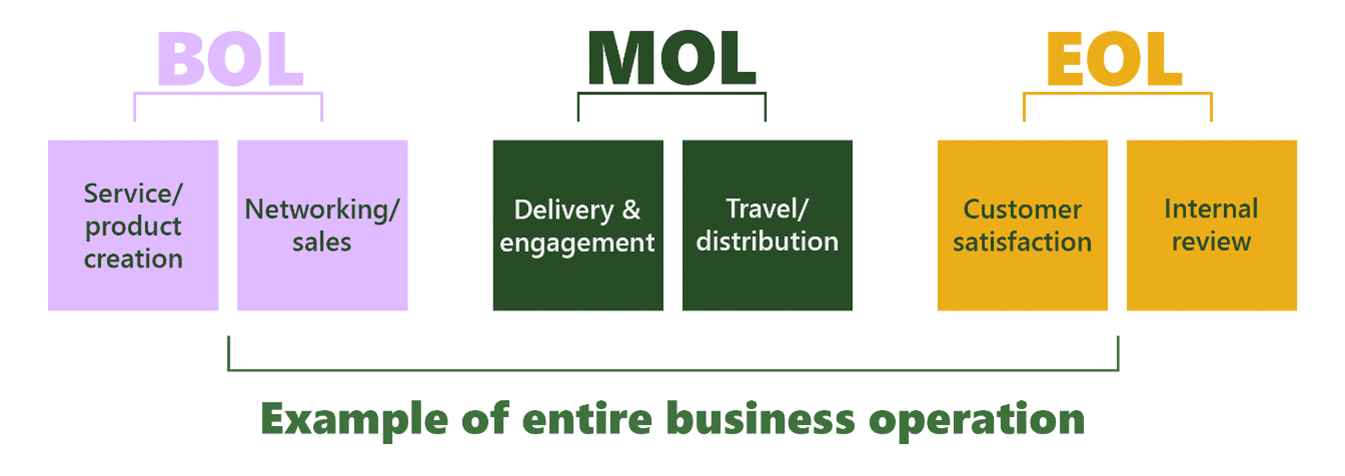
Value chains – what are they and how can they enhance sustainability performance
In this blog, sustainability consultant Amber dives into defining the value chain and just why it’s so important to analyse impact this way. Even small businesses can review their value chains to understand their impact and direct their sustainability efforts.
What is the value chain?
The value chain concept was founded in the 80s, by a lecturer at Harvard Business School:
“The value chain disaggregates a firm into its strategically relevant activities in order to understand the behaviour of costs and the existing and potential sources of differentiation. A firm gains competitive advantage by performing these strategically important activities more cheaply or better than its competitors” (Michael Porter, Harvard Business School, 1980)
In its simplest form, a value chain is the full lifecycle of a product or service, from start to end. By analysing this process view of the entire organisation, and mapping out activities from end-to-end, organisations can start to think about where they can
The idea is to analyse the product or service as a complete system, that is made up of sub-systems, that each have their own inputs, transformation processes and outputs. Each sub-system will have its own requirements, consumption of resources and engagement with specific stakeholders relative to the operations. For example, the sub-system of manufacturing textiles from raw fibres to materials ready for use might include analysing resources and energy used, factory waste, workers engaged and any 3rd party auditors.
So, how are value chains and supply chains different?
Well, your supply chain relates to the materials/services, operations and processes involved in creating and selling to a customer. A value-chain on the other hand expands on this and considers where your current value is made (tangible and intangible). Exploring the value chain helps recognise where you’re losing or destroying value, enabling you to maximise opportunities. For example, waste prevention or employee development initiatives.
Whilst the supply chain is an integral ‘sub-system’ within the whole business system, it’s by no means the only one. The value chain goes further in addressing every sub-system – essentially ‘the whole world’ of the business. Depending on the size and type of the business, this can feel daunting. An effective way to start is by splitting the lifecycle of the product or service up into 3 sections, beginning, middle and end. Every activity in the value chain has a direct effect on economic value, social value, and environmental value.

BOL: beginning of life, MOL: middle of life, EOL: end of life
Getting started on a sustainability journey can be a daunting task and often it is hard to know where to start. Analysing business value chains is the perfect starting point. Taking entire scope of operations apart and analysing all upstream and downstream activities in the organisation provides for the perfect opportunity to start understanding where you already have economic, social, and environmental value, and where there are opportunities to increase valu e. It also helps you to pin-point exactly where to focus time, energy and resources.
The key word here really is value.
Reviewing your value chain is the best way to increase significant value across entire operations. By taking a step back and analysing every step in detail, increases authenticity and business worth, through ensuring that you are fully understanding of the wider impact had by the business. It’s not a rare sight to see sustainability strategies that encompass carbon offsets and charitable giving that has no direct link to business operations. What worth does this set in the context of mitigating the impact a business has on the environment, or communities? By conducting a value chain analysis, you are setting yourself up with specific insights needed to tailor your business strategy or sustainability initiatives to mitigate the negative impacts (and therefore increase value) , or create positive impact in the places and communities you operate in.

Analysing the value chain lays strong foundations for successful, and impactful sustainability strategies to be built from. By seeing where value is already captured, and where there is potential to capture more value, the beginnings of a tailored sustainability strategy begin to emerge. For example, after a thorough value chain analysis you might discover that some overseas manufacturers are not able to implement best practise water usage. By knowing this you can now tailor efforts to mitigate these risks (reducing negative environmental value), help local communities with water stewardship (boosting social value), and build a more sustainable business model (increasing economic value).
Tying in other frameworks
Then you might start thinking about how other frameworks tie in. The value chain analysis also allows businesses to anchor SDGs to processes where relevant, or where certification and industry standards might come in handy, helping to build the strong foundations to any sustainability and transformation opportunities.

Supporting with a value chain analysis and SDG mapping workshop are just some of the ways in which our consultancy services can help you maximise your positive impact. Find out more, or get in touch with our friendly team of consultants to have chat.

